Cancer affects millions of people worldwide. While traditional cancer therapies have advanced significantly, they often come with crippling side effects. Many cancer patients have found benefit from cannabis microdosing.
Microdosing involves ingesting small and accurate doses of cannabis to reap the medicinal effects while staying below the threshold for psychoactivity. Research indicates that microdosing cannabis can supplement traditional cancer treatments and even help alleviate chemotherapy-related side effects.
Experimental studies showed that the activation of cannabinoid receptors by cannabinoids is antitumorigenic in most cases, i.e., it inhibits tumor cell proliferation, induces apoptosis in vitro, and blocks angiogenesis and tumor invasion/metastasis in vivo. (Dariš, et. al.)

Feel free to explore the extraordinary benefits of microdosing THC and CBD as they help treat a variety of medical conditions—anything from neuropathic pain and insomnia to chronic stress, depression, and posttraumatic stress disorder (PTSD).
We’ll show you how taking low doses of the best THC gummies on the market can help you fight cancer and improve your overall health.
Understanding Cancer
Cancer is a disease characterized by the uncontrolled growth and spread of abnormal cells in the body. While it is normal and necessary for normal cells in the body to divide and expand, cancer cells tend to divide and grow uncontrollably, invading neighboring tissues and spreading to other regions of the body.
Symptoms of cancer might vary based on the type of cancer and its stage. Cancer does not always cause symptoms in its early stages, which is why routine cancer tests are critical.
Some common cancer symptoms include:
- Fatigue that doesn’t improve with rest
- Chronic pain in the affected area or elsewhere in the body
- Weight loss
- Changes in the skin and the appearance of new moles
- Changes in bowel or bladder habits (constipation or frequent urination)
- Swelling in the lymph nodes, abdomen, or other parts of the body
- Unexplained bleeding or bruising
Cancer is a complex disease with many factors influencing its development, growth, and progression, such as:
- Genetic abnormalities
- Exposure to environmental chemicals
- Unhealthy lifestyle choices such as smoking, poor diet, and lack of exercise
- Some types of viral infections
Processes such as metastasis, angiogenesis, and cell proliferation help cancer grow and spread.
Cancer Cell Proliferation
Cancer cell proliferation is the rapid growth of cancer cells. It leads to the formation of tumors. Unlike normal cells, which have a regulated cell cycle and divide only when they are needed, cancer cells divide continually and uncontrollably. And unlike normal cells, cancer cells grow and spread significantly quicker.
Cancer cells can activate survival pathways that promote cell growth and prevent cell death (apoptosis), and they can even learn how to evade mechanisms that typically regulate cell death. This makes them extremely resilient and able to thrive and multiply even in unfavorable conditions (e.g., low levels of nutrients, oxygen, or growth factors and exposure to chemotherapy drugs and radiation).
Metastasis
Metastasis is the process by which cancer cells migrate from the main tumor to other parts of the body. Once they’ve infiltrated the surrounding tissues, cancer cells can travel throughout the body via the circulation or lymphatic system, where they form new tumors in other organs or tissues.
The spread of cancer to new tissues and other organs in the body can interfere with tissue and organ function. Metastasis is often associated with a poorer prognosis and lower survival rates.
Angiogenesis
Cancer cells require a steady supply of nutrients and oxygen in order to grow and spread, which can be supplied through the development of new blood vessels. This is called angiogenesis, the formation of new blood vessels from pre-existing ones.
The new blood vessels supply the cancer cells with the nutrition and oxygen they require for growth and proliferation. They may even allow cancer cells to metastasize.
What Cancer Therapies are Available?
Cancer treatments differ based on the nature, stage, and location of the cancer. These treatments can be successful at killing cancer cells and decreasing tumors, but they frequently cause serious adverse effects such as fatigue, nausea, hair loss, and a compromised immune system.
Cancer treatments typically fall into one of the following categories:
- Chemotherapy drugs
- Radiation therapy: the use of high-energy radiation to kill cancer cells or shrink tumors
- Immunotherapy: the use of drugs to stimulate the immune system to identify and attack cancer cells
- Targeted therapy: the use of drugs that target specific molecules or genes that are involved in the growth and spread of cancer cells
- Hormone therapy
- Surgery
Depending on the type of cancer and how far it has progressed, many conventional cancer treatments have a fairly high success rate. Some cancer patients prefer to supplement their treatment with alternative therapies. Cannabis is one such alternative approach and has been shown to help with cancer pain and other related side effects.
Many people turn to smoking cannabis as a way to relieve chemotherapy-induced nausea and vomiting. Add potent antitumor properties to it, and you can see why taking small amounts of cannabis may be a natural way to complement conventional cancer treatments—and even improve their efficacy.
Let’s explore the two major cannabinoids—Delta 9 THC and cannabidiol—and see why microdosing edibles is the safest and most effective way to fight cancer. Before we get started, make sure to check out our detailed guide to Delta 9 THC and learn all about harnessing the power of cannabis.
A Short Introduction to THC and CBD
Delta-9-tetrahydrocannabinol (Delta 9 THC) is one of the two primary cannabinoids extracted from the cannabis plant. At sufficient doses, THC produces euphoric feelings, often referred to as the “high.” At low doses, Delta 9 THC can be an effective treatment for chronic pain and inflammatory processes, multiple sclerosis, glaucoma, many types of anxiety disorders, and depression. Due to its potent health effects, many cancer patients have been using THC to alleviate the pain and side effects associated with chemotherapy.
THC interacts with our endocannabinoid system (ECS), a complex internal system that regulates many important physiological processes, to produce its therapeutic effects. For example, by binding to the CB1 cannabinoid receptor, THC helps release dopamine in the brain.
When it binds to CB2 receptors, Delta 9 THC produces powerful anti-inflammatory effects.
Unlike THC, cannabidiol (CBD) can’t make you high. Its relationship with the endocannabinoid system is a bit more complicated than that. CBD does not bind to cannabinoid receptors directly. Instead, it downregulates their function when THC is present in the system.
CBD has little binding affinity for either CB1 or CB2 receptors, but it is capable of antagonizing them in the presence of THC. In fact, CBD behaves as a non-competitive negative allosteric modulator of CB1 receptor, and it reduces the efficacy and potency of THC and [anandamide]. (Vučković, et. al.)
Now might be a good time to check out this comprehensive introduction to cannabidiol before we delve deeper into CBD’s effects and benefits.
Because of its unique interacting pathways, CBD produces a variety of medicinal effects, many of which can help fight cancer-related conditions:
- Anxiolytic: CBD reduces anxiety
- Analgesic
- Anti-inflammatory: low doses of CBD can be an effective treatment against inflammation
- Neuroprotective
- Anti-metastatic
- Anti-proliferative
Let’s take a closer look at our endocannabinoid system and its significance in fighting cancer.
Cannabis in the Endocannabinoid System
According to Lerner, et. al., the endocannabinoid system is a complex network of chemical signals and receptors that “serves pivotal roles in a diverse range of physiological and pathophysiological states, including behavior, pain, schizophrenia, obesity, Alzheimer disease, multiple sclerosis and cardiovascular disease.”
The main role of the ECS is to maintain homeostasis by regulating important bodily functions:
- Mood
- Sleep
- Appetite
- Pain perception
- Reproductive health
- Immunological response
The ECS is made up of 3 primary subsystems that work together like a well-oiled machine to regulate our physiological functions.
- Endocannabinoids (endogenous cannabinoids produced by our bodies)
- Cannabinoid receptors (CB1 and CB2 are two main types of receptors in the ECS)
- Enzymes that break down the endocannabinoids
Exogenous cannabinoids—like those found in the cannabis plant—can interact with our ECS when we consume them. They bind to the endocannabinoid receptors and influence pain management, sleep, appetite, the immune response, and many other biochemical changes in the body. By targeting the ECS, cannabinoids seem to slow tumor growth while promoting apoptosis and autophagy.
CBD and THC may be two distinct compounds from the cannabis plant with different impacts on the ECS, but when it comes to treating cancer, THC and CBD show similar medicinal effects. While both cannabinoids have strong therapeutic potential on their own, it is their combination that seems to produce the best results. Remember CBD’s indirect impact on cannabinoid receptors?
It has been demonstrated that cannabidiol can act synergistically with THC and contribute to the analgesic effect of medicinal-based cannabis extract. At the same time, CBD displays an entourage effect (the mechanism by which non-psychoactive compounds present in cannabis modulate the overall effects of the plant), and is capable of improving tolerability and perhaps also the safety of THC by reducing the likelihood of psychoactive effects and antagonizing several other adverse effects of THC (sedation, tachycardia, and anxiety). (Vučković, et. al.)
You don’t think the entourage effect is a real thing? Evidence is piling up that it exists.
CBD and THC in the Entourage Effect
The entourage effect refers to the synergistic interaction between cannabis compounds, where THC, CBD, and other cannabinoids work together to produce enhanced therapeutic effects.
Through mechanisms that are still being researched, compounds derived from cannabis plants appear to act synergistically with each other.
Research indicates that the entourage effect has potential therapeutic applications in treating peripheral neuropathic pain associated with chemotherapy. According to a 2017 mouse model study, “CBD may be potent and effective at preventing the development of chemotherapy‐induced peripheral neuropathy, and its clinical use may be enhanced by co‐administration of low doses of THC.”
The beneficial effects of each cannabinoid become more pronounced when you take them together. Luckily, our full spectrum CBD gummies contain effective combos of THC, CBD, and other cannabis extracts that enhance each other’s benefits. Check out our detailed comparison of THC and CBD to learn more about their similarities and differences.
With our Relax Plus gummies, you don’t have to choose between CBD and THC—you get the ultimate entourage effect. Thanks to 25 mg of CBD, these fresh watermelon edibles are fast at lifting the mood and enhancing relaxation. The “plus” in their name is for 5 mg of Delta which will produce a mild buzz without making you feel “heavy” and sedated.
Let’s look at how cannabis compounds work together to suppress cancer development.
A Groundbreaking British Journal of Cancer Analysis
In a thorough look at the state of the research on cannabis and cancer, Burkhard Hinz and Robert Ramer published their “Cannabinoids as anticancer drugs: current status of preclinical research” meta analysis in the British Journal of Cancer in 2022.
Hinz and Ramer validated cannabis's potential in cancer treatment. The pair concluded that:
…cannabinoid compounds exert tumour growth inhibitory and antimetastatic effects, cannabinoid compounds may represent a useful additional therapeutic option to currently used cytostatic drugs. This view is also supported by studies indicating a synergistic effect of cannabinoids in combination with currently used chemotherapeutic agents and other therapeutic options. Furthermore, data increasingly suggest that cannabinoids may additionally function as antimetastatic and anti-angiogenic tumour therapy and support the immune system in its defence against tumours.
Among other significant facts, the article noted the following:
- Cannabinoid compounds, including THC and CBD, have demonstrated potential in inhibiting tumor growth and metastasis in preclinical studies.
- Cannabinoids could serve as a beneficial addition to currently used cancer drugs.
- These compounds might act synergistically with traditional chemotherapeutic agents, enhancing their effects.
- Cannabinoids could possibly work as anti-metastatic and anti-angiogenic agents in cancer therapy.
- They could also potentially support the immune system in its fight against tumors.
- Clinical trials are necessary to define the benefits, risks, and optimal dosages of cannabinoids in cancer treatment.
- Some cannabinoids have shown potential to overcome cancer drug resistance and enhance drug uptake in cancer cells.
- Cannabinoids have demonstrated a role in sensitizing cancer cells to other treatments, such as ionizing radiation.
- The endocannabinoid system could play an important role in tumor defense, making it a promising target for anticancer interventions.
- Cannabis use has shown mixed results in observational studies, with some indicating shorter time to tumor progression and others showing no effect on survival rates.
- The method of cannabis administration in these studies varied, which could impact the results.
- A collection of case reports suggest pharmaceutical-grade synthetic CBD could reduce circulating tumor cells or tumor size.
- Small clinical trials have shown promising results, but larger, adequately powered, randomized placebo-controlled trials are necessary.
- Cannabinoids could potentially be used at multiple levels of tumor progression, suggesting a role as an add-on option in cancer treatment.
- Further research is required to determine the efficacy and safety of cannabinoids in cancer therapy.
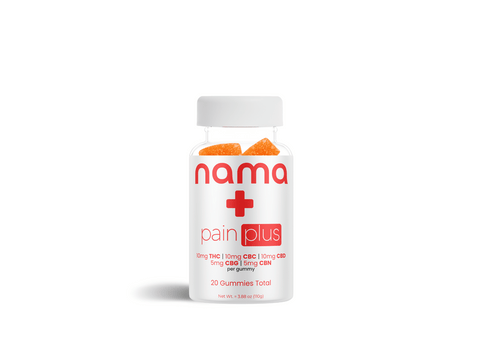
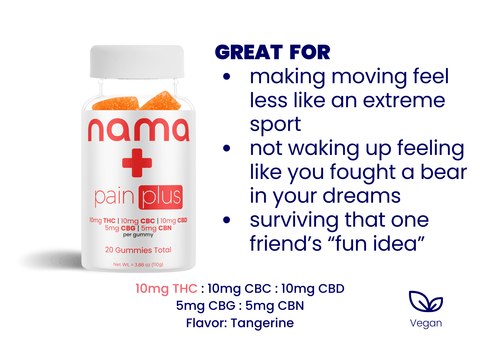
THC: 10 mg | CBC: 10 mg | CBD: 10 mg | CBG: 5 mg | CBN 5mg
Anticancer Properties of Cannabis
As the British Journal of Cancer article by Hinz and Ramer shows, THC and CBD can play a role in cancer treatment via their ability to interact with the endocannabinoid system.
Anti-Metastatic Effect of Cannabis
Cannabis has been shown to block cancer cell invasion and migration, lowering the risk of metastasis. Earlier research by Hinz and Ramer, published in 2015 in the International Review of Cell and Molecular Biology, showed that THC and CBD can:
- Change the gene expression of cancer cells (the way they produce their genes), making them less aggressive and reducing their ability to spread: “several studies revealed cannabinoids alter the gene expression of cancer cells toward a less-aggressive phenotype and to modulate their secretomic profile.”
- Inhibit cancer cell angiogenesis (the formation of new blood vessels), which is vital for cancer’s propagation: “cannabinoids likewise modulate the release of factors from tumor cells that subsequently suppress the chemoattraction of vessel cells thereby conferring antiangiogenesis.”
According to Preet, et. al., “THC was able to inhibit tumor growth and lung metastases in a murine model of lung cancer.”
“Other in vivo studies demonstrated that treatment with CBD reduced colon cancer cell proliferation, induced apoptosis, and also had anti-metastatic and anti-angiogenesis effects.” (Honarmand, et. al.)
Cannabis May Induce Cancer Cell Death
Apoptosis, also known as programmed cell death, is a natural mechanism that eliminates damaged, unnecessary, or possibly dangerous cells. Apoptosis is an important physiological process that helps maintain the balance between cell development and cell death.
One vital way of fighting cancer is by inducing cancer cell apoptosis. A 2005 observational study found that a synthetic cannabinoid reduced the amount of phosphorylated BAD protein. Phosphorylation of BAD has been linked to cancer cell survival pathways and drug resistance.
Thus, we suggest that the increase of proapoptotic Bad activity is an important link between the inhibition of survival pathways and an onset of execution phase of cannabinoid-induced glioma cell death.
A 2022 study found that CBD has a cytotoxic and pro-apoptotic effect on cancer cells. It lowered the resistance of cancer cells to treatment and even changed their morphological characteristics in order to hinder their growth.
Cannabis can also induce mitochondrial dysfunction in cancer cells. Mitochondria are important for making energy in cells and controlling cell death, and without well-functioning mitochondria, cancer cells are crippled. Mould, et. al. discovered “that CBD can modulate mitochondrial function and morphology in a dose-dependent manner,” causing mitochondrial dysfunction in cancer cells.
A 2005 study showed that Delta 9 THC can inhibit growth and promote apoptosis in glioblastoma multiforme (GBM) by selectively targeting GBM cells without significantly affecting normal brain cells.
In glioma cell lines, treatment with THC produced dose-dependent inhibition of cell viability and proliferation. In glioma cells, treatment with THC at 3 µM was able to inhibit cell growth.
Anti-Proliferative Effect of Cannabis
According to Hart, et. al., “low levels of THC induced lung cancer cell proliferation.”
These results demonstrate that pharmacologically active concentrations of THC are capable of promoting the cell proliferation of human carcinoma cells and identify [epidermal growth factor receptor] signal transactivation as the underlying molecular mechanism.
In a study on melanoma, a preparation of equal amounts of THC and CBD was able to decrease tumor growth and inhibit the proliferation of skin cancer cells while increasing autophagy and apoptosis in vivo.
The synergy of CBD and THC seems to inhibit cell proliferation in human glioblastoma. CBD enhances the ability of Delta 9 THC to prevent cancer cell proliferation.
The treatment of glioblastoma cells with both compounds led to significant modulations of the cell cycle and induction of reactive oxygen species and apoptosis as well as specific modulations of extracellular signal-regulated kinase and caspase activities. These specific changes were not observed with either compound individually, indicating that the signal transduction pathways affected by the combination treatment were unique. (Marcu, et. al.)
Cannabis Can Prevent Cancer Angiogenesis
Cannabis may hinder the creation of new blood vessels in cancer, a process critical for tumor growth. Animal experimental trials revealed that cannabinoids can suppress angiogenesis in malignant brain tumors. Cannabis also seems to inhibit the expression of proangiogenic factors and an enzyme known as matrix metalloproteinase-2 in cancer.
In vitro and in vivo experiments show that at least two mechanisms may be involved in this cannabinoid action: the direct inhibition of vascular endothelial cell migration and survival as well as the decrease of the expression of proangiogenic factors (vascular endothelial growth factor and angiopoietin-2) and matrix metalloproteinase-2 in the tumors.
Endothelial cells line the inner walls of blood vessels and play a crucial role in angiogenesis. Studies have shown that cannabinoids can directly affect endothelial cell functions—inhibit endothelial cell proliferation, migration, and tube formation, all of which are essential elements in the formation of blood vessels.
The cannabinoids WIN-55,212-2 and JWH-133 were demonstrated to inhibit vascular endothelial cell survival and migration as part of their anti-angiogenic action. In addition, the cannabinoid derivative HU-331 that exerts topoisomerase inhibitor properties due to a quinone moiety was shown to cause apoptosis of endothelial cells at nanomolar concentrations. Other cannabinoids such as 2-methyl-2′-F-anandamide (Met-F-anandamide) and cannabidiol (CBD) revealed as inhibitors of endothelial cell proliferation and tube formation, while sparing a proapoptotic action on endothelial cells. (Ramer, et. al.)
WIN-55,212-2, JWH-133, and HU-331 are synthetic cannabinoids and endocannabinoid receptor agonists. They interact with the ECS to reduce inflammation, protect nerve cells, boost the immune system, and fight cancer.
Cannabis Can Relieve Chemotherapy-Related Side Effects
Chemotherapy and other cancer treatments are frequently associated with distressing side effects that can have a substantial negative impact on a patient's quality of life. Cannabis has been known to help alleviate therapy-related side effects.
A 2022 review study of cannabis in palliative care suggested that “positive treatment effects have been reported for some medical cannabis products in the palliative care setting,” but that further evidence is needed to support its use in clinical practice.
Positive treatment effects (statistical significance with P < 0.05) were seen for some [cannabis] products in pain, nausea and vomiting, appetite, sleep, fatigue, chemosensory perception and paraneoplastic night sweats in patients with cancer…
A 2021 study revealed that advanced cancer patients regularly use cannabis to treat both cancer- and therapy-specific symptoms, such as:
- Chronic pain
- Nausea and vomiting
- Fatigue
- Poor appetite
- Anxiety and depression
- Sleep problems
- Digestive problems
Cancer patients often experience wasting syndrome (cachexia) and a loss of appetite. Cachexia is the disproportionate loss of lean body tissue, and it is most common in the latter stages of pancreatic, lung, and prostate cancer.
A THC-based synthetic drug called dronabinol interacts with cannabinoid receptors in the central nervous system and stimulates the brain’s areas responsible for hunger and the control of nausea and vomiting. The US Food and Drug Administration approved this THC oral medication in 1985. It is used to treat instances of anorexia nervosa, nausea, and weight loss in AIDS and cancer patients.
Integrating cannabis into palliative care offers new possibilities for addressing the physical and emotional challenges faced by cancer patients and enhancing their overall well-being. Tomko, et. al. point out that “the therapeutic use of cannabinoids is currently limited to the treatment of symptoms and pain associated with chemotherapy, while their potential use as cytotoxic drugs in chemotherapy still requires validation in patients.”
Cannabis and Bladder Cancer
Studies on bladder cancer cell lines have revealed that THC, CBD, and other cannabis compounds may have an antitumor effect, mainly by reducing cancer cell growth and proliferation.
Cannflavin A, a chemical found in Cannabis sativa, shows antitumor properties in bladder cancer. Researchers examined the effects of cannflavin A on bladder cancer treatment and its ability to work synergistically with chemotherapy drugs like gemcitabine and cisplatin.
Our results indicate that compounds from Cannabis sativa other than cannabinoids, like the flavonoid cannflavin A, can be cytotoxic to human bladder transitional carcinoma cells and that this compound can exert synergistic effects when combined with other agents.
A 2021 study suggested that CBD effectively causes cell apoptosis in bladder cancer.
…CBD could inhibit proliferation on BC cells, including T24, UM-UC-3, and 5637. Moreover, cell apoptosis was detected by using nuclear staining, TUNEL, and flow cytometer. Subsequently, wound healing assay suggested that CBD reduced the migration ability of BC cells.
Apart from its potent anticancer properties, cannabis might also help manage the pain associated with bladder cancer and its treatments. Cancer therapies often cause chronic and acute pain, discomfort, and other symptoms. Cannabinoid medications may relieve bladder cancer-related pain and improve patients’ quality of life.
Cannabis and Brain Cancer
CBD and THC have the ability to limit brain tumor growth, cause cancer cell death, and prevent the creation of new blood vessels that feed brain tumors.
A good portion of the ECS is found in the brain. This makes it easier for the ECS to regulate cell proliferation, survival, and migration, all of which are important factors in cancer progression. By modulating the ECS, cannabinoids may impede cancer cell proliferation.
In an effort to determine the safety and efficacy of Delta 9 THC on recurrent glioblastoma multiforme, researchers injected THC directly into tumors. In laboratory experiments, THC revealed its capacity to suppress tumor cell growth and diminish cell proliferation.
Δ9-Tetrahydrocannabinol inhibited tumour-cell proliferation in vitro and decreased tumour-cell Ki67 immunostaining when administered to two patients. The fair safety profile of THC, together with its possible antiproliferative action on tumour cells reported here and in other studies, may set the basis for future trials aimed at evaluating the potential antitumoral activity of cannabinoids. (Guzmán, et. al.)
Neuroinflammation (inflammation in the brain) seems to speed brain cancer growth. A group of researchers has found that gliomas “promote the neuroinflammatory tumor microenvironment” and that “the consequences of a compromised BBB are deleteriously exposing the brain to potentially harmful concentrations of substances… all of which can lead to disruption of brain homeostasis” (Alghamri, et. al).
Cannabinoids have anti-inflammatory characteristics and can limit tumor growth and invasion in brain cancer by reducing the generation of pro-inflammatory chemicals.
Cannabis and Breast Cancer
Cannabinoids have been proven in preclinical research on cell lines and animal models to decrease the development of breast cancer cells and trigger apoptosis. They have also shown promise in shrinking tumors, decreasing metastasis, and regulating angiogenesis in breast cancer.
Cannabinoid receptors are present all over our bodies, including breast tissues. Studies show that Delta 9 THC limits cancer cell proliferation in breast cancer by interfering with the cell cycle, the mechanism that controls cell division. One of the main mechanisms by which THC inhibits cell cycle progression and causes apoptosis is through CB2 receptors.
Here, we show that Delta(9)-tetrahydrocannabinol (THC), through activation of CB(2) cannabinoid receptors, reduces human breast cancer cell proliferation by blocking the progression of the cell cycle and by inducing apoptosis… Of interest, the proliferation pattern of normal human mammary epithelial cells was much less affected by THC. (Caffarel, et. al.)
In addition to their direct action against breast cancer, cannabinoids may reduce symptoms linked to the illness and cancer treatment. They show great promise in alleviating pain, nausea and vomiting, loss of appetite, and neuropathic pain.
Cannabis and Cervical Cancer
Cervical cancer develops in the cells of the lower part of the uterus, called the cervix. Human papillomavirus (HPV) infection is the primary cause of cervical cancer. Recent studies indicate that cannabis and cannabinoids, such as CBD and THC, might suppress the development of cervical cancer.
According to a 2016 study, CBD was effective at reducing the proliferation of cervical cancer cells.
Results obtained indicate that both cannabidiol and Cannabis sativa extracts were able to halt cell proliferation in all cell lines at varying concentrations. They further revealed that apoptosis was induced by cannabidiol as shown by increased subG0/G1 and apoptosis through annexin V. Apoptosis was confirmed by overexpression of p53, caspase 3 and bax.
CBD has been found to induce cancer cell death, inhibit proliferation, and disrupt the cancer cell cycle, all leading to the suppression of cervical cancer growth. A 2021 study suggests that the ECS and cannabinoids derived from plants have a major impact on gynecological cancers.
CBD induced cell death by the accumulation of cells in the sub-G0 phase (cell death phase) of the cell cycle… Hence, CBD may be an additional therapeutic tool for the treatment of cervical cancer, yet additional in vivo studies… will be needed to clarify the impact of CBD on cervical cancer.
Cannabis also helps alleviate cancer pain and treatment-related side effects. A 2020 survey study has shown that 83% of women with cervical cancer experienced relief for their cancer or treatment-related symptoms after consuming medical cannabis. The women in the survey reported relief from insomnia, chronic neuropathic pain, abdominal pain, nausea, and anxiety.
The presence of multiple cannabinoids and other compounds in cannabis may exert synergistic effects in combating cervical cancer and enhance its overall anticancer potential.
Cannabis and Colorectal Cancer
Colorectal cancer affects the colon or rectum, and it is the third most common cancer in the world. A growing body of scientific evidence suggests that cannabis might be an effective treatment option for colorectal cancer. THC and CBD have shown promise in preclinical studies for their anticancer properties.
Cannabinoids were shown to modulate the pathways involved in cell proliferation, angiogenesis, programmed cell death and metastasis. Because of that, they are proposed as adjunct therapy for many malignancies, including colorectal cancer. Zaiachuk, et. al.
One study found that THC induced apoptosis in colorectal cancer cells via the activation of CB1 receptors and subsequent inhibition of PI3K-AKT and RAS-MAPK/ERK survival pathways.
THC biodegradable microspheres were developed for an alternative cannabinoid delivery system than the usual oral route. The THC microspheres were able to inhibit cell proliferation of multiple cancers, including Caco-2 colon cancer cells, over a 9 day period.
Biodegradable microspheres are tiny particles made from biocompatible and biodegradable materials. They gradually break down or dissolve. THC microspheres have shown promise as an effective and innovative way of delivering small amounts of THC and other cannabinoids to cancer patients.
Cannabis and Kidney Cancer
The effectiveness of cannabis in treating kidney cancer is a subject of ongoing research, and there is little published evidence on the subject. Based on what we know about the effects of THC, CBD, and cannabis in general on cancer, we see powerful anticancer properties that might be effective against kidney cancer as well. Small doses of cannabis might treat renal (kidney) cancer by inducing cell apoptosis and preventing cancer cells from growing, spreading, and migrating.
More research, including clinical trials involving human subjects, is needed to investigate the efficacy and optimal dosing of cannabis-based treatments for kidney cancer.
Cannabis and Leukemia
Microdosing cannabis might also fight leukemia. Low doses of THC seem to act synergistically with cytotoxic chemicals and boost their efficiency against cancer.
Researchers discovered that even the smallest amounts of THC increased the sensitivity of leukemia cells to the cytotoxic chemicals used in the study. This led to a 50% decrease in the amount of therapy drugs needed to kill cancer cells. The results imply that “for the first time that a combination approach with THC and established cytotoxic agents may enhance cell death in vitro.”
A study shows that dronabinol, which is a synthetically-produced THC, inhibits proliferation in lymphatic and myeloid leukemia cell lines. Dronabinol was also able to induce cell apoptosis in leukemia cell lines, mainly by interacting with CB1 and CB2 cannabinoid receptors.
We here reveal a novel aspect of dronabinol, a cannabinoid derivative, which displays remarkable antiproliferative as well as proapoptotic efficacy in a distinct leukemia patient cohort - in vitro and in ex vivo native leukemia blasts.
While these findings are promising, current evidence on the use of cannabis for treating leukemia is still in its early phases. More research is needed to confirm the efficacy and establish an effective dose of cannabis to treat leukemia.
Cannabis and Liver Cancer
THC, CBD, and other cannabis compounds have antitumor properties for treating liver cancer.
According to a study, regular cannabis users were 55% less likely to develop hepatocellular carcinoma (HCC) than non-users. The results of this study point to a possible protective relationship between cannabis consumption and liver cancer.
We know that THC is a powerful cannabinoid that can induce cancer cell apoptosis and impede cancer proliferation. A synergy of THC with other cannabis compounds—the so-called entourage effect—might be even more effective than THC on its own.
One study found that Delta 9 THC and JWH-015, a cannabinoid agonist, lowered the survival rate of liver cancer cells by activating CB2 receptors. Autophagy also seems to have mediated liver cell apoptosis by upregulating cell growth proteins called tribbles homolog 3 (TRB3) and adenosine monophosphate-activated kinase (AMPK).
Pharmacological and genetic inhibition of AMPK upstream kinases supported that calmodulin-activated kinase kinase β was responsible for cannabinoid-induced AMPK activation and autophagy. In vivo studies revealed that Δ9-THC and JWH-015 reduced the growth of HCC subcutaneous xenografts, an effect that was not evident when autophagy was genetically of pharmacologically inhibited in those tumors. Moreover, cannabinoids were also able to inhibit tumor growth and ascites in an orthotopic model of HCC xenograft.
In addition to THC, other cannabis extracts have shown potential in preclinical investigations for liver cancer treatment. Linalool is a naturally occurring terpene (an aromatic chemical from cannabis) that might pack a serious anticancer punch. It may help prevent the growth and proliferation of cancer cells. A 2014 study showed linalool’s inhibitory effects against breast, colorectal, and liver cancer. According to the study, “cell cycle analysis also confirmed that linalool and p-coumaric acid can lead to apoptosis.”
Cannabis and Lung Cancer
Research suggests that cannabinoids have favorable anti-lung-cancer properties.
Lung cancer cells express cannabinoid receptors, which are known targets for THC. By binding to them, THC decreased cell proliferation induced by epithelial growth factor (EGF), chemotaxis (cell movement in response to chemical stimulation), and chemoinvasion (cancer cell invasion). In a 2008 animal study, THC inhibited lung cancer:
…there was significant inhibition of the subcutaneous tumor growth and lung metastasis of A549 cells in THC-treated animals as compared to vehicle-treated controls. Tumor samples from THC-treated animals revealed antiproliferative and antiangiogenic effects of THC.
Despite the evidence for using cannabis to fight lung cancer, many people are worried about the negative impact of smoking pot on their lungs. So are we; that’s why we recommend microdosing cannabis. Our THC edibles are not only nutritious and tasty, but they also pose no threat to your lungs.
Smoking cannabis involves breathing in a slew of hazardous components such as tar, carcinogens, and all kinds of other harmful chemicals. Our Delta 9 Bliss gummies contain only the best ingredients, tested in third-party labs for purity and safety. But beware: once you’ve tasted these flavorful honeydew melon treats, there’s no turning back.
Product QUIZ
Need help deciding what product is best for you? Take our quiz, just three questions until your perfect match!
Cannabis and Melanoma
Melanoma, or skin cancer, develops in melanocytes, cells that produce melanin. Melanin is a pigment that gives our skin its color. DNA damage to skin cells, genetic predisposition, and a weak immune system can contribute to the development of melanoma.
The medical community still has a lot to learn about the effect of cannabis or cannabinoids on skin cancer, but based on what we already know, we’d like to believe that CBD and THC might be effective in fighting melanoma. Recent studies show the importance of cannabinoid-induced autophagy, which causes skin cancer cell death.
Autophagy is a normal process in our bodies that keeps cells healthy and working properly. It’s our cells’ way of cleaning themselves up and eliminating waste (damaged proteins and organelles). Cancer cells seem to be able to “hijack” the autophagy mechanism. If deprived of food or oxygen, they can use autophagy to help them survive and adapt by feeding on the cells’ recycled components to fuel their development and resist therapy.
Treatment with Δ(9)-Tetrahydrocannabinol (THC) resulted in the activation of autophagy, loss of cell viability, and activation of apoptosis... Administration of Sativex-like (a laboratory preparation comprising equal amounts of THC and cannabidiol (CBD)) to mice bearing BRAF wild-type melanoma xenografts substantially inhibited melanoma viability, proliferation, and tumor growth paralleled by an increase in autophagy and apoptosis… (Armstrong, et. al.)
Sativex is an orally administered, FDA-approved cannabinoid medication used to treat and alleviate muscle stiffness, spasms, and neuropathic pain associated with multiple sclerosis. Some cancer patients report improvement in symptoms like chronic neuropathic pain, nausea, and vomiting after using the sativex oromucosal spray, but more research is needed to investigate how efficient sativex can be for treating cancer.
To fight melanoma, doctors often try a combination of treatments like immunotherapy, radiation therapy, chemotherapy, and surgery. We’re not advocating against these treatments, but there’s nothing better at alleviating cancer therapy-related symptoms than microdosing cannabis.
With higher concentrations of THC and CBD (10 mg per edible), our Euphoria gummies contain 10 mg of THC and CBD each—nothing says relief from nasty side effects of cancer therapy quite like the entourage effect—for the ultimate cannabis experience. They are packed with natural ingredients and flavors and made from organic, American-grown hemp.
All our gummies are made from hemp, not marijuana. This makes our THC gummies federally legal across the US. Read our extensive guide to hemp vs marijuana to understand the difference between the two.
Cannabis and Pancreatic Cancer
Pancreatic cancer is a very aggressive and difficult-to-treat malignancy. Cannabinoids may inhibit pancreatic cancer and improve therapy outcomes. Cannabinoids may limit cancer cell growth, trigger apoptosis, and play a role in preventing metastasis.
Cannabinoid receptors have been discovered in pancreatic cancer cells, and some studies have revealed that “cannabinoid receptors are expressed in human pancreatic tumor cell lines and tumor biopsies at much higher levels than in normal pancreatic tissue.” (Carracedo, et. al.).
By activating CB1 and CB2 receptors, cannabis triggers a wide range of biochemical reactions that can slow pancreatic cancer progression. A 2019 review article reminds us of the anti-proliferative and pro-apoptotic properties of cannabis in cancer cells. It also shows that, in combination with traditional cancer treatments, cannabis has greater therapeutic potential for reducing tumor growth in pancreatic cancer animal models.
The study proposes ceramide therapy as one of the most effective mechanisms against pancreatic cancer.
Ceramide is a lipid that regulates many cellular processes, including proliferation, differentiation, and death. In pancreatic cancer, ceramide levels are frequently dysregulated. Low levels of ceramides have been linked to enhanced tumor cell survival, while increased levels have an anticancer effect.
Ceramide synthesized by de novo synthesis was found to be involved in the apoptosis of pancreatic cancer cells induced by THC. THC has been shown to cause a dose-dependent reduction in cell viability by inducing apoptotic cell death. (Velasco, et. al.)
By increasing ceramide levels, THC seems to create ceramide-mediated pathways for destroying pancreatic cancer cells.
Cannabis and Penile Cancer
Because there is little scientific evidence available, it is difficult to draw concrete conclusions about the effectiveness of cannabis in treating penile cancer. Based on the general anti-cancer propensities of THC and CBD, cannabis could provide a robust supplement to traditional cancer treatments.
Penile cancer is a rare form of carcinoma that develops in the penis. The exact cause of penile cancer is still a subject of research, but several factors might contribute to its development:
- HPV infection can be a significant risk factor for penile cancer. Certain strains of HPV can increase the risk of developing this type of cancer. According to research, HPV DNA is detected in more than 20% of penile tumor cells (Kidd, et. al.)
- Poor hygiene may contribute to penile cancer.
- Phimosis (a condition where the foreskin cannot be fully retracted, leading to a potential irritation of the penile tissues) may increase the risk of cancer.
- Tobacco use, including smoking cigarettes, has been linked to an increased risk of penile cancer. According to the University of Rochester, “people who smoke or use other forms of tobacco are at higher risk for penile cancer than those who don't. Cancer-causing chemicals in tobacco may harm the DNA in cells in the penis,” which can lead to developing penile cancer.
Low doses of Delta 9 THC might be just the healthy alternative to smoking you’ve been looking for. No risks of developing cancer here because our quality THC gummies contain zero tobacco or other harmful chemicals. Even if you choose THC-free edibles, like our phenomenal collection of CBD gummies, you’re safe from ingesting any cancer-causing chemical. Au naturel, mon frère. (That’s French for 100% natural.)
Cannabis and Prostate Cancer
According to research, low doses of cannabis can suppress the growth of prostate cancer. THC also has analgesic effects, which makes it an intriguing option for cancer pain relief.
Delta 9 THC causes apoptosis in prostate cancer cells. Surprisingly, cannabinoid receptors don’t seem to be the target of THC’s apoptotic effect. Instead, research suggests a “receptor-independent mechanism for THC-induced apoptosis in PC-3 prostate cells.”
In spite of the presence of cannabinoid receptor CB1 in prostate PC-3 cells, THC exerts its action via a non-receptor-mediated pathway. Our results are in concordance with previous studies which demonstrate in other cell types, a cannabinoid induction of apoptosis by a receptor-independent mechanism. (Ruiz, et. al.)
While investigating the anticancer properties of cannabinoids, researchers discovered the connection between CBD, a synthetic cannabinoid called WIN-55,212 (WIN), and phosphatases. Phosphatases are enzymes that can block cancer-promoting signaling pathways. CBD and WIN seem to increase the expression of certain anticancer phosphatases in cells and suppress the growth of prostate and colon cancer.
…this study shows for the first time that cannabinoids induced mRNA expression of several phosphatases in LNCaP and SW480 cells and this was consistent with induction of phosphatases by other phytochemical anticancer drugs. (Sreevalsan, et. al.)
While these studies shed much-needed light on the possible anticancer properties of cannabis, more research is needed to completely understand the underlying mechanisms of phytocannabinoids in prostate cancer treatment.
Cannabis and Stomach Cancer
Stomach or gastric cancer is a malignancy that attacks the cells of the stomach lining. Research on gastric cancer seems to indicate that cannabidiol has greater therapeutic effects for treating this type of cancer than other cannabis compounds. CBD has been shown to slow cancer cell growth, prevent proliferation, and induce apoptosis in gastric cancer cells.
Preliminary experiments have shown that CBD can significantly inhibit the proliferation and induce apoptosis in SGC-7901 cells, suggesting that CBD may be a potential chemotherapeutic drug for gastric cancer.
A protein called X-linked inhibitor of apoptosis (XIAP) is involved in preventing cell death in stomach cancer. A 2019 study proposes that CBD may be able to suppress this protein while boosting the presence of a different protein called Smac, which inhibits XIAP. Researchers found that “the expression of Smac, a known inhibitor of XIAP, was found to be elevated during CBD treatment.”
Cannabis might also be effective against the symptoms and side effects of stomach cancer. Abdominal pain, indigestion, weight loss, nausea, vomiting, and sleep problems are frequent symptoms of stomach cancer. Cannabis may decrease these distressing symptoms in cancer patients and potentially improve their quality of life.
Cannabis and Testicular Cancer
Testicular cancer is a relatively uncommon ailment, and the use of cannabis for treating testicular cancer has not been thoroughly investigated. THC and CBD have shown powerful anticancer properties in other types of cancer. We believe that THC and CBD might also be effective against testicular cancer.
Cannabis can help with sleep problems and ease the pain, nausea, vomiting, and other harsh side effects that come with pharmaceutical cancer treatments.
Nausea and vomiting are common and unpleasant side effects of chemotherapy for cancer patients. Some studies show that cannabis, especially THC, can help lessen chemotherapy-induced nausea and vomiting.
Anxiety and depression are big problems cancer patients face, and microdosing cannabis can help with anxious and depressive feelings. Many people take small amounts of THC and CBD to alleviate depression and fight the symptoms of mood disorders. Men undergoing testicular cancer treatment tend to be low in “happy hormones” like dopamine and serotonin. Microdoses of cannabis raise serotonin levels, directly impacting mental health, boosting mood, and reducing depressive thoughts.
Our Relax Plus gummies are our favorite cannabis product to boost serotonin and promote relaxation. They contain 25 mg of premium CBD with a touch of hemp-derived Delta 9 THC. These delicious gummies are specially formulated with a blend of cannabinoids and natural ingredients to help reduce stress, ease anxiety, and fight depression.
Cannabis and Thyroid Cancer
Thyroid cancer develops in the cells of the thyroid gland, which is found at the base of the neck. The thyroid gland is in charge of producing hormones that aid in metabolism and control important body functions. Research on cannabinoids in treating thyroid cancer is very limited, but based on our previous knowledge of their antitumor properties, we believe that cannabis could show its anti-metastatic, anti-proliferative, anti-angiogenic, and pro-apoptotic effects on this type of malignancy.
A 2007 study confirms that endogenous cannabinoids, particularly 2-methyl-2'-F-anandamide (Met-F-AEA), can inhibit the growth of thyroid cancer in vivo.
We show that Met-F-AEA inhibited bFGF-stimulated endothelial cell proliferation, in a dose-dependent manner, and also induced apoptosis, both effects reliant on cannabinoid CB1 receptor stimulation… Met-F-AEA inhibited tumor-induced angiogenesis in a three-dimensional model of endothelial and thyroid tumor cells.
Researchers have also discovered CB1 and CB2 cannabinoid receptors in both healthy and unhealthy thyroid tissue. Their expression seems to be greater in cancerous thyroid tumors than in benign ones. CB2 receptor expression was linked to lymph node tumors and other aggressive features of malignant thyroids. (Lakiotaki, et. al.)
CB receptor overexpression in thyroid carcinoma has recently been reported, in vitro. More to the point, IL-12 stimulation of anaplastic thyroid carcinoma cell lines induced CB2 receptor overexpression and led to CB2-agonist mediated apoptosis and tumour regression. Moreover, CB2 upregulation rendered the tumour cells more susceptible to treatment with standard chemotherapy.
While researchers don’t fully understand the link between cannabinoid receptors and thyroid cancer, the available research seems to point to the upregulation of CB2 receptors as a viable way to suppress the development of thyroid cancer. By modulating the function of CB2 receptors, exogenous cannabinoids from the cannabis plant might aid in the fight against thyroid cancer.
Cannabis and Uterine Cancer
Uterine or endometrial cancer is a malignancy that affects the uterine lining, or endometrium. While research on the effects of cannabis on endometrial cancer is still in its infancy, there are several studies that suggest the possible therapeutic benefits of THC and CBD for cancer treatment.
A 2020 study found that CBD shows cytotoxic and pro-apoptotic effects on endometrial cancer cells.
CBD reduced cell viability, activating predominantly apoptosis in type I cells and autophagy in mixed type [endometrial cancer] cells. The CBD improved chemotherapeutic drugs cytotoxic effects, enhanced by TRPV2 over-expression.
THC could treat uterine cancer cells by reducing their survival rate and ability to metastasize.
THC inhibited EC cell viability and motility by inhibiting epithelial-mesenchymal transition (EMT) and downregulating matrix metalloproteinase-9 (MMP-9) gene expression in aggressive human EC cells. The results have the potential to promote the development of novel compounds for the treatment of EC metastasis. (Zhang, et. al.)
While preclinical research has shown promising results, more studies and clinical trials are needed to fully understand the efficacy of CBD and THC in the treatment of uterine cancer.
Delta 8 THC and Cancer
Delta-8 tetrahydrocannabinol, or Delta 8 THC, is a compound found in small quantities in the cannabis plant. Similarly to other cannabinoids, Delta 8 binds to receptors in our endocannabinoid system. Because of its subtle interactions with the ECS, Delta 8 produces milder effects than Delta 9 THC. (You can find out what those milder effects are in this awesome comparison between Delta 8 and Delta 9 THC.)
One study showed that Delta 8 THC, among other cannabinoids, was successful at slowing the growth of tumors in mice with lung cancer. Delta 8 THC was also involved in increasing the average survival time of the mice.
Cannabis users report relief from many symptoms of cancer and side effects of cancer-related treatments after using Delta 8 THC. This compound is believed to be particularly helpful in stimulating appetite and reducing feelings of nausea and vomiting.
A small study on Delta 8 and its application in pediatric oncology revealed that a Delta 8 treatment prevented vomiting in children with hematologic cancers. According to the results, “the THC treatment started two hours before each antineoplastic treatment and was continued every 6 hrs for 24 hours. Vomiting was completely prevented.”
Delta 8 THC seems to promote sleep as well. Many cannabis users prefer taking small amounts of Delta 8 THC to help them sleep better and treat sleeping disorders like insomnia and sleep apnea.
The best way to microdose Delta 8 and reap its therapeutic benefits is with our very own Elevate Delta 8 gummies. These fruity edibles contain 12.5 mg of organic, hemp-derived Delta 8 THC to ease your nausea and send you to Slumberland any day of the week.
Our in-depth guide can offer more valuable info on Delta 8 THC, so don’t miss out on its effects, uses, benefits, and everything else you might want to know about this potent cannabinoid.
Benefits of Microdosing Cannabis
Microdosing cannabis is the practice of taking very small doses, usually with a concentration of THC below the psychoactive threshold. Low doses seem to stimulate the endocannabinoid system and reduce the symptoms associated with many health issues, such as pain, anxiety, and inflammation.
Surprisingly, smaller doses of THC may provide more health benefits than higher ones. Large concentrations of THC can actually desensitize CB1 receptors, lowering their overall efficacy and perhaps causing unpleasant side effects like anxiety or paranoia. As a result, microdosing THC may be a more effective and safer strategy to harness the therapeutic potential of cannabis while avoiding unwanted side effects.
Here are some potential benefits of microdosing cannabis.
- Microdosing cannabis has been shown to reduce anxiety and stress. The University of Washington found that small amounts of THC reduced anxiety and improved mood, while higher doses had the opposite effect on mental health.
- Many people with ADHD microdose cannabis to boost creativity and focus.
- Glaucoma is a condition where the increased pressure in the eye can damage the optic nerve, often leading to vision loss. Small amounts of THC have been found to relieve glaucoma by reducing the intraocular pressure.
- CBD and THC may support the process of generating new neurons in the brain, or neurogenesis. Pre-clinical studies on animal models have shown that certain cannabinoids, such as CBD, may promote neurogenesis and neuroplasticity.
- Microdosing cannabis can help reduce stage fright and improve performance during stressful situations.
- Microdosing cannabis may provide relief from the symptoms of irritable bowel syndrome (IBS). According to research, low THC and CBD doses could potentially modulate the ECS and alleviate symptoms of irritable bowel syndrome, such as abdominal pain, spasms, and altered bowel movements.
- Low cannabis doses may provide relief from symptoms associated with multiple sclerosis, such as muscle spasticity, pain, and tremors.
Are you looking for a safe way to improve your health and lower your chances of getting cancer? The best way to go is with cannabis microdoses. Our top quality THC edibles combine the best flavors and high-profile ingredients to bring out the best of cannabis.
Start with our low-THC Energy gummies. Only 2.5 mg of Delta 9 will produce a mild high, perfect for uplifting your mood. Regular use might even shield your body from oxidative stress, inflammation, and other harmful conditions that could lead to cancer.
Cannabis Legality
Delta 9 is legal on a federal level in the US. Under the 2018 Farm Bill, Delta 9 must be derived from hemp, and the THC content cannot exceed 0.3% by dry weight.
However, the legality of hemp-derived products is determined by each state individually. For example, Delta 8 THC is legal on a federal level, which also makes our Delta 8 products federally legal. However, a number of US states still ban Delta 8 outright.
All our Delta 9 THC edibles are legal in compliance with the Farm Bill. To make sure they are legal in your state, read up on our state-by-state guide to Delta 9 legality.
Cannabis for Cancer FAQ
Microdoses of 2–10 mg of Delta 9 THC should bring relief to cancer patients, especially from chemotherapy-induced side effects. This amount allows patients to assess their THC-specific response and tolerance. Patients can monitor how their bodies respond to THC by starting with low doses and slowly increasing them as required.
Preliminary research suggests that cannabis oil might help treat prostate cancer by preventing cancer cells from growing and spreading.
All studies have reported that the treatment of prostate cancers in in vivo/xenograft models with various cannabinoids decreased the size of the tumor, the outcomes of which depended on the dose and length of treatment. Within the limitation of these identified studies, cannabinoids were shown to reduce the size of prostate cancer tumors in animal models.
However, more research is needed to determine the usefulness and safety of cannabis in human trials.
CBD has shown promise in preclinical trials for its anticancer properties. While it has powerful effects on cancer cell apoptosis and prevents tumors from spreading and infecting other cells, CBD works best when combined with other cannabis compounds.
Remember this little thing called the entourage effect? CBD, THC, and other cannabinoids are more effective in fighting cancer and other illnesses than either one in isolation. Our Euphoria gummies contain equal amounts of THC and CBD—enhanced by the phenomenal strawberry flavor—that lift the mood and reduce pain like there’s no tomorrow.
If you’re struggling with sleep, Sleep Plus edibles infused with lavender may be just what you need. They combine 2 mg of THC, 25 mg of CBD, and a touch of melatonin to bring the whole sleeping experience to a whole new level.
Melatonin is a frequent addition to our sleep gummies. Read more about the reasons you need melatonin if you want to have a good night’s sleep every night.
Hemp-derived CBD is an excellent painkiller. CBD can be extracted from hemp or marijuana plants. Since we want our cannabis products to be 100% legal in the US, we use only hemp-derived CBD (and THC).
Many of our Delta 9 gummies for pain contain small amounts of CBD to enhance the analgesic properties of THC.
The endocannabinoid system regulates several physiological processes vital to fighting cancer, such as cell development, reducing cancer-related inflammation, and boosting our system’s immunological response.
The ECS may play a role in suppressing cancer cell growth and angiogenesis and inducing apoptosis. The ECS turned out to be a crucial antitumor mechanism because of the abundance of proteins expressed in CB1 and CB2 receptors.
Currently, several CB1R and CB2R-containing heteromers have been reported and, in cancer cells, CB2R form heteromers with the G protein-coupled chemokine receptor CXCR4, the G protein-coupled receptor 55 (GPR55) and the tyrosine kinase receptor (TKR)... These protein complexes possess unique pharmacological and signaling properties, and their modulation might affect the antitumoral activity of the ECS. (Moreno, et. al.)
Prescription cannabinoids have shown promise in the treatment of Tourette's syndrome and Parkinson's disease. Tourette’s and Parkinson’s are both neurological disorders that impact the functioning of the nervous system. Parkinson’s disease largely affects movement and causes symptoms like tremors, muscle stiffness, and balance and coordination difficulties. Tourette’s syndrome is characterized by involuntary and repeated movements and vocalizations known as tics.
One study suggests that THC and a synthetic form of THC might be used to decrease tics and help with associated behavioral difficulties in Tourette’s syndrome. THC seemed to have reduced tics significantly compared to the placebo.
A 2022 study on cannabis use for Parkinson's disease discovered that cannabis may have potential benefits in alleviating symptoms such as tremors, anxiety, and pain, as well as increasing sleep quality and overall quality of life in patients with Parkinson's disease. More studies are needed to fully understand the possible benefits of cannabis for Parkinson's disease.
In addition to Parkinson’s and Tourette’s, cannabinoids have been investigated in the setting of other neurological disorders like Huntington's disease and amyotrophic lateral sclerosis (ALS), suggesting their potential for broader therapeutic use. The use of cannabis for medical purposes in treating neurological diseases has yielded mixed findings, with some research indicating improvements in motor or non-motor symptoms and quality of life.
According to a 2019 qualitative study, microdosing cannabis might be an effective way to relieve chronic or acute pain that accompanies a spinal cord injury.
This study shows that for our participants cannabis produced important and meaningful outcomes along with reducing pain. Participants in our study described improved sleep, and increased participation in family, and community life—outcomes which might contribute to any reduced pain scores.
Researchers showed that oral THC and CBD may trigger a neuroprotective response after acute spinal cord damage, helping to activate key pathways that promote spontaneous healing. They suggest that the “neuroprotective effects of cannabinoids have been shown preclinically when administered within hours following cerebral or spinal lesions.”
Studies on the effects of marijuana on inflammation and chronic pain reveal that low doses of cannabis might be beneficial in treating inflammatory bowel disease, such as Crohn’s disease. Remember dronabinol, a synthetic THC derivative? One study showed that “in patients with IBS with diarrhea or alternating, dronabinol reduces fasting colonic motility.”
The endocannabinoid system plays a crucial role in the activities of the gastrointestinal tract. Our stomach is lined up with cannabinoid receptors. Their activation can diminish gut motility, limit secretion, and lessen gut hypersensitivity. Storr, et. al. show how drugs that modulate endocannabinoid levels in the stomach can lower motility and inflammation. This means that cannabis and all its derivatives show therapeutic potential in treating IBS, Crohn’s disease, and other inflammatory illnesses.
There is a growing body of evidence that suggests that low doses of cannabis can have a positive effect on psychiatric disorders.
Researchers explored the effects of marijuana on psychiatric diseases such as anxiety, depression, schizophrenia, and posttraumatic stress disorder. They looked at outcomes like symptom severity, quality of life, and medication use to test the effects of marijuana on mental problems. CBD may help lower social anxiety and could be used as a supplementary treatment for schizophrenia. Some case studies indicate that medical cannabis may also improve sleep in people suffering from PTSD.
In preclinical investigations, cannabinoids demonstrated antitumor potential. Cannabinoids such as THC and CBD may have anti-tumor effects by decreasing cancer cell proliferation, inducing apoptosis, and suppressing angiogenesis.
For cancer management, consult with healthcare specialists before including cannabinoid medications in your treatment.
Top Sellers
New? Start with our Ultimate Sampler!

THC: 10 mg | CBC: 10 mg | CBD: 10 mg | CBG: 5 mg | CBN 5mg
Resources
Dariš, B., Verboten, M. T., Knez, E., & Ferk, P. (n.d.). Cannabinoids in cancer treatment: Therapeutic potential and legislation. PubMed Central (PMC). https://doi.org/10.17305/bjbms.2018.3532
Vučković, S., Srebro, D., Vujović, K. S., Vučetić, E., & Prostran, M. (2018, October 15). Cannabinoids and Pain: New Insights From Old Molecules. Frontiers. https://doi.org/10.3389/fphar.2018.01259
Lerner, R., Lutz, B., & Bindila, L. (2013, September 19). Tricks and Tracks in the Identification and Quantification of Endocannabinoids. ELS. https://doi.org/10.1002/9780470015902.a0023407
Hinz, B., & Ramer, R. (2022, March 11). Cannabinoids as anticancer drugs: current status of preclinical research - British Journal of Cancer. Nature. https://doi.org/10.1038/s41416-022-01727-4
King, K. M., Myers, A. M., Soroka‐Monzo, A. J., Tuma, R. F., Tallarida, R. J., Walker, E. A., & Ward, S. J. (2017, July 27). Single and combined effects of Δ9‐tetrahydrocannabinol and cannabidiol in a mouse model of chemotherapy‐induced neuropathic pain. PubMed Central (PMC). https://doi.org/10.1111/bph.13887
New Insights into Antimetastatic and Antiangiogenic Effects of Cannabinoids. (2014, December 18). New Insights Into Antimetastatic and Antiangiogenic Effects of Cannabinoids - ScienceDirect. https://doi.org/10.1016/bs.ircmb.2014.10.005
Delta9-Tetrahydrocannabinol inhibits epithelial growth factor-induced lung cancer cell migration in vitro as well as its growth and metastasis in vivo - PubMed. (2008, January 10). PubMed. https://doi.org/10.1038/sj.onc.1210641
Honarmand, M., Namazi, F., Mohammadi, A., & Nazifi, S. (2018, August 27). Can cannabidiol inhibit angiogenesis in colon cancer? - Comparative Clinical Pathology. SpringerLink. https://doi.org/10.1007/s00580-018-2810-6
Ellert-Miklaszewska, A., Kaminska, B., & Konarska, L. (2005, January). Cannabinoids down-regulate PI3K/Akt and Erk signalling pathways and activate proapoptotic function of Bad protein. Cellular Signalling, 17(1), 25–37. https://doi.org/10.1016/j.cellsig.2004.05.011
Real-Time Monitoring of the Cytotoxic and Antimetastatic Properties of Cannabidiol in Human Oral Squamous Cell Carcinoma Cells Using Electric Cell-Substrate Impedance Sensing - PubMed. (2022, December 13). PubMed. https://doi.org/10.3390/ijms232415842
Mould RR, Botchway SW, Parkinson JRC, Thomas EL, Guy GW, Bell JD, Nunn AVW. Cannabidiol Modulates Mitochondrial Redox and Dynamics in MCF7 Cancer Cells: A Study Using Fluorescence Lifetime Imaging Microscopy of NAD(P)H. Front Mol Biosci. 2021 May 11;8:630107. doi: 10.3389/fmolb.2021.630107.
Cannabinoids selectively inhibit proliferation and induce death of cultured human glioblastoma multiforme cells - PubMed. (2005, August 1). PubMed. https://doi.org/10.1007/s11060-004-5950-2
Cannabidiol enhances the inhibitory effects of delta9-tetrahydrocannabinol on human glioblastoma cell proliferation and survival - PubMed. (2010, January 1). PubMed. https://doi.org/10.1158/1535-7163.MCT-09-0407
Exploiting cannabinoid-induced cytotoxic autophagy to drive melanoma cell death - PubMed. (2015, June 1). PubMed. https://doi.org/10.1038/jid.2015.45
Cannabidiol enhances the inhibitory effects of delta9-tetrahydrocannabinol on human glioblastoma cell proliferation and survival - PubMed. (2010, January 1). PubMed. https://doi.org/10.1158/1535-7163.MCT-09-0407
Inhibition of tumor angiogenesis by cannabinoids - PubMed. (2003, March 1). PubMed. https://doi.org/10.1096/fj.02-0795fje
Cannabinoids inhibit angiogenic capacities of endothelial cells via release of tissue inhibitor of matrix metalloproteinases-1 from lung cancer cells. (2014, June 26). ScienceDirect. https://doi.org/10.1016/j.bcp.2014.06.017
Cannabis in Palliative Care: A Systematic Review of Current Evidence - PubMed. (2022, November 1). PubMed. https://doi.org/10.1016/j.jpainsymman.2022.06.002
The Management of Cancer Symptoms and Treatment-Induced Side Effects With Cannabis or Cannabinoids - PubMed. (2021, November 28). PubMed. https://doi.org/10.1093/jncimonographs/lgab011
Badowski, M. E., & Yanful, P. K. (2018, April 6). Dronabinol oral solution in the management of anorexia and weight loss in AIDS and cancer. PubMed Central (PMC). https://doi.org/10.2147/TCRM.S126849
Tomko, A. M., Whynot, E. G., Ellis, L. D., & Dupré, D. J. (2020, July 21). Anti-Cancer Potential of Cannabinoids, Terpenes, and Flavonoids Present in Cannabis. MDPI. https://doi.org/10.3390/cancers12071985
Tomko, A. M., Whynot, E. G., & Dupré, D. J. (2022, July 22). Anti-cancer properties of cannflavin A and potential synergistic effects with gemcitabine, cisplatin, and cannabinoids in bladder cancer - Journal of Cannabis Research. BioMed Central. https://doi.org/10.1186/s42238-022-00151-y
Chen, S., Deng, C., Zheng, W., Li, S., Liu, Y., Zhang, T., Zhang, C., Fu, Y., Miao, H., Ren, F., & Ma, X. (2021, September 7). Cannabidiol Effectively Promoted Cell Death in Bladder Cancer and the Improved Intravesical Adhesion Drugs Delivery Strategy Could Be Better Used for Treatment. PubMed Central (PMC). https://doi.org/10.3390/pharmaceutics13091415
Guzmán, M., Duarte, M. J., Blázquez, C., Ravina, J., Rosa, M. C., Galve-Roperh, I., Sánchez, C., Velasco, G., & González-Feria, L. (2006, June 27). A pilot clinical study of Δ9-tetrahydrocannabinol in patients with recurrent glioblastoma multiforme - British Journal of Cancer. Nature. https://doi.org/10.1038/sj.bjc.6603236
Alghamri, M. S., McClellan, B. L., Hartlage, C. S., Haase, S., Faisal, S. M., Thalla, R., Dabaja, A., Banerjee, K., Carney, S. V., Mujeeb, A. A., Olin, M. R., Moon, J. J., Schwendeman, A., Lowenstein, P. R., & Castro, M. G. (2021, May 4). Targeting Neuroinflammation in Brain Cancer: Uncovering Mechanisms, Pharmacological Targets, and Neuropharmaceutical Developments. Frontiers. https://doi.org/10.3389/fphar.2021.680021
Delta9-tetrahydrocannabinol inhibits cell cycle progression in human breast cancer cells through Cdc2 regulation - PubMed. (2006, July 1). PubMed. https://doi.org/10.1158/0008-5472.CAN-05-4566
Lukhele, S. T., & Motadi, L. R. (2016, September 1). Cannabidiol rather than Cannabis sativa extracts inhibit cell growth and induce apoptosis in cervical cancer cells. PubMed Central (PMC). https://doi.org/10.1186/s12906-016-1280-0
Zaiachuk, M., Pryimak, N., Kovalchuk, O., & Kovalchuk, I. (2021, September 24). Cannabinoids, Medical Cannabis, and Colorectal Cancer Immunotherapy. PubMed Central (PMC). https://doi.org/10.3389/fmed.2021.713153
Greenhough, A., Patsos, H. A., Williams, A. C., & Paraskeva, C. (2007, June 21). The cannabinoid δ 9 ‐tetrahydrocannabinol inhibits RAS‐MAPK and PI3K‐AKT survival signalling and induces BAD‐mediated apoptosis in colorectal cancer cells. International Journal of Cancer, 121(10), 2172–2180. https://doi.org/10.1002/ijc.22917
Liu, W. M., Scott, K. A., Shamash, J., Joel, S., & Powles, T. B. (2008, January). Enhancing the in vitro cytotoxic activity of Δ9-tetrahydrocannabinol in leukemic cells through a combinatorial approach. Leukemia & Lymphoma, 49(9), 1800–1809. https://doi.org/10.1080/10428190802239188
Kampa-Schittenhelm, K. M., Salitzky, O., Akmut, F., Illing, B., Kanz, L., Salih, H. R., & Schittenhelm, M. M. (2016, January 16). Dronabinol has preferential antileukemic activity in acute lymphoblastic and myeloid leukemia with lymphoid differentiation patterns. BMC Cancer, 16(1). https://doi.org/10.1186/s12885-015-2029-8
ElTelbany, A., Khoudari, G., Al-Khadra, Y., McCullough, A., & Alkhouri, N. (2022, April 28). Lower Rates of Hepatocellular Carcinoma Observed Among Cannabis Users: A Population-Based Study. PubMed Central (PMC). https://doi.org/10.7759/cureus.24576
Vara, D., Salazar, M., Olea-Herrero, N., Guzmán, M., Velasco, G., & Díaz-Laviada, I. (2011, April 8). Anti-tumoral action of cannabinoids on hepatocellular carcinoma: role of AMPK-dependent activation of autophagy. PubMed Central (PMC). https://doi.org/10.1038/cdd.2011.32
Vara, D., Salazar, M., Olea-Herrero, N., Guzmán, M., Velasco, G., & Díaz-Laviada, I. (2011, April 8). Anti-tumoral action of cannabinoids on hepatocellular carcinoma: role of AMPK-dependent activation of autophagy. PubMed Central (PMC). https://doi.org/10.1038/cdd.2011.32
Linalool exhibits cytotoxic effects by activating antitumor immunity - PubMed. (2014, May 22). PubMed. https://doi.org/10.3390/molecules19056694
Delta9-Tetrahydrocannabinol inhibits epithelial growth factor-induced lung cancer cell migration in vitro as well as its growth and metastasis in vivo - PubMed. (2008, January 10). PubMed. https://doi.org/10.1038/sj.onc.1210641
Exploiting cannabinoid-induced cytotoxic autophagy to drive melanoma cell death - PubMed. (2015, June 1). PubMed. https://doi.org/10.1038/jid.2015.45
Cannabinoids induce apoptosis of pancreatic tumor cells via endoplasmic reticulum stress-related genes - PubMed. (2006, July 1). PubMed. https://doi.org/10.1158/0008-5472.CAN-06-0169
Sharafi G, He H, Nikfarjam M (2019) Potential use of cannabinoids for the treatment of pancreatic cancer, Journal of Pancreatic Cancer 5:1, 1–7, DOI: 10.1089/pancan.2018.0019.
Velasco, G., Carracedo, A., Lorente, M., & Guzmán, M. (2009, January 1). Cannabinoids as Potential Antitumoral Agents in Pancreatic Cancer. SpringerLink. https://doi.org/10.1007/978-3-642-00152-9_5
Kidd, L. C., Chaing, S., Chipollini, J., Giuliano, A. R., Spiess, P. E., & Sharma, P. (n.d.). Relationship between human papillomavirus and penile cancer—implications for prevention and treatment. PubMed Central (PMC). https://doi.org/10.21037/tau.2017.06.27
Penile Cancer: Risk Factors - Health Encyclopedia - University of Rochester Medical Center. (n.d.). Penile Cancer: Risk Factors - Health Encyclopedia - University of Rochester Medical Center. https://www.urmc.rochester.edu/encyclopedia/content.aspx?contenttypeid=34&contentid=18963-1
Δ9-Tetrahydrocannabinol induces apoptosis in human prostate PC-3 cells via a receptor-independent mechanism. (1999, September 21). ScienceDirect. https://doi.org/10.1016/S0014-5793(99)01073-X
Sreevalsan, S., Joseph, S., Jutooru, I., Chadalapaka, G., & Safe, S. H. (n.d.). Induction of Apoptosis by Cannabinoids in Prostate and Colon Cancer Cells Is Phosphatase Dependent. PubMed Central (PMC). https://www.ncbi.nlm.nih.gov/pmc/articles/PMC3280884/
Zhang, X., Qin, Y., Pan, Z., Li, M., Liu, X., Chen, X., Qu, G., Zhou, L., Xu, M., Zheng, Q., & Li, D. (2019, July 25). Cannabidiol Induces Cell Cycle Arrest and Cell Apoptosis in Human Gastric Cancer SGC-7901 Cells. PubMed Central (PMC). https://doi.org/10.3390/biom9080302
Jeong, S., Jo, M. J., Yun, H. K., Kim, D. Y., Kim, B. R., Kim, J. L., Park, S. H., Na, Y. J., Jeong, Y. A., Kim, B. G., Ashktorab, H., Smoot, D. T., Heo, J. Y., Han, J., Lee, S. I., Kim, H. D., Kim, D. H., Oh, S. C., & Lee, D. H. (2019, November 7). Cannabidiol promotes apoptosis via regulation of XIAP/Smac in gastric cancer - Cell Death & Disease. Nature. https://doi.org/10.1038/s41419-019-2001-7
Antiangiogenic activity of the endocannabinoid anandamide: correlation to its tumor-suppressor efficacy - PubMed. (2007, May 1). PubMed. https://doi.org/10.1002/jcp.20954
Lakiotaki, E., Giaginis, C., Tolia, M., Alexandrou, P., Delladetsima, I., Giannopoulou, I., Kyrgias, G., Patsouris, E., & Theocharis, S. (2015, October 11). Clinical Significance of Cannabinoid Receptors CB1 and CB2 Expression in Human Malignant and Benign Thyroid Lesions. PubMed Central (PMC). https://doi.org/10.1155/2015/839403
Marinelli, O., Morelli, M. B., Annibali, D., Aguzzi, C., Zeppa, L., Tuyaerts, S., Amantini, C., Amant, F., Ferretti, B., Maggi, F., Santoni, G., & Nabissi, M. (2020, July 29). The Effects of Cannabidiol and Prognostic Role of TRPV2 in Human Endometrial Cancer. PubMed Central (PMC). https://doi.org/10.3390/ijms21155409
∆9-tetrahydrocannabinol inhibits epithelial-mesenchymal transition and metastasis by targeting matrix metalloproteinase-9 in endometrial cancer - PubMed. (2018, June 1). PubMed. https://doi.org/10.3892/ol.2018.8407
Antineoplastic activity of cannabinoids - PubMed. (1975, September 1). PubMed. https://doi.org/10.1093/jnci/55.3.597
An efficient new cannabinoid antiemetic in pediatric oncology - PubMed. (1995, January 1). PubMed. https://doi.org/10.1016/0024-3205(95)00194-b
Stoner SA. Effects of Marijuana on Mental Health: Anxiety Disorders. Alcohol & Drug Abuse Institute, University of Washington, June 2017. URL: http://adai.uw.edu/pubs/pdf/2017mjanxiety.pdf.
Luján, M., & Valverde, O. (2020, June 2). The Pro-neurogenic Effects of Cannabidiol and Its Potential Therapeutic Implications in Psychiatric Disorders. Frontiers. https://doi.org/10.3389/fnbeh.2020.00109
Brugnatelli, V., Turco, F., Freo, U., & Zanette, G. (2020, April 21). Irritable Bowel Syndrome: Manipulating the Endocannabinoid System as First-Line Treatment. PubMed Central (PMC). https://doi.org/10.3389/fnins.2020.00371
Singh, K., Jamshidi, N., Zomer, R., Piva, T. J., & Mantri, N. (2020, August 29). Cannabinoids and Prostate Cancer: A Systematic Review of Animal Studies. PubMed Central (PMC). https://doi.org/10.3390/ijms21176265
Moreno, E., Cavic, M., Krivokuca, A., Casadó, V., & Canela, E. (2019, March 19). The Endocannabinoid System as a Target in Cancer Diseases: Are We There Yet? Frontiers. https://doi.org/10.3389/fphar.2019.00339
Treatment of Tourette syndrome with cannabinoids - PubMed. (2013, January 1). PubMed. https://doi.org/10.3233/BEN-120276
Effects of Cannabis in Parkinson’s Disease: A Systematic Review and Meta-Analysis - PubMed. (2022, January 1). PubMed. https://doi.org/10.3233/JPD-212923
Lacroix, C., Alleman-Brimault, I., Zalta, A., Rouby, F., Cassé-Perrot, C., Jouve, E., Attolini, L., Guilhaumou, R., Micallef, J., & Blin, O. (2022, March 28). What Do We Know About Medical Cannabis in Neurological Disorders and What Are the Next Steps? Frontiers. https://doi.org/10.3389/fphar.2022.883987
Bourke, J. A., Catherwood, V. J., Nunnerley, J. L., Martin, R. A., M. Levack, W. M., Thompson, B. L., & Acland, R. H. (2019, October 8). Using cannabis for pain management after spinal cord injury: a qualitative study. PubMed Central (PMC). https://doi.org/10.1038/s41394-019-0227-3
Drossel, C., Forchheimer, M., & Meade, M. A. (n.d.). Characteristics of Individuals with Spinal Cord Injury Who Use Cannabis for Therapeutic Purposes. PubMed Central (PMC). https://doi.org/10.1310/sci2201-3
Pharmacogenetic trial of a cannabinoid agonist shows reduced fasting colonic motility in patients with nonconstipated irritable bowel syndrome - PubMed. (2011, November 1). PubMed. https://doi.org/10.1053/j.gastro.2011.07.036
storr, M. A., yce, B., andrews, C. N., & sharkey, K. A. (2008, August). The role of the endocannabinoid system in the pathophysiology and treatment of irritable bowel syndrome. Neurogastroenterology & Motility, 20(8), 857–868. https://doi.org/10.1111/j.1365-2982.2008.01175.x
Sarris, J., Sinclair, J., Karamacoska, D., Davidson, M., & Firth, J. (2020, January 16). Medicinal cannabis for psychiatric disorders: a clinically-focused systematic review. BMC Psychiatry, 20(1). https://doi.org/10.1186/s12888-019-2409-8
nama CBD FDA & Legal Disclaimer
Our products are not intended to diagnose, treat, cure, or prevent any disease. They are not a replacement for prescription medications and have not been evaluated by the Food and Drug Administration (FDA).
The information provided on this website does not, and is not intended to, constitute legal advice or any statements of the status of any laws. Any information, content, and materials available on this site are for general informational purposes only, and are not intended to be relied upon for any purpose.
Readers of this website should contact their attorney to obtain advice with respect to any particular legal matter including decisions on what products are, or are not, legal to sell, possess, or consume. No reader, user, or browser of this site should act or refrain from acting on the basis of information on this site without first seeking legal advice from their own counsel in the relevant jurisdiction.
Only your individual attorney can provide assurances that the information contained herein – and your interpretation of it – is applicable or accurate for your particular situation. Use of, and access to, this website or any of the links or resources contained within the site do not create an attorney-client relationship between the reader, user, or browser, and website authors, contributors, contributing law firms, or committee members and their respective employers.
About
Learn
Join us on this journey

© Copyright 2025 nama Products LLC. All Rights Reserved.
†These statements have not been evaluated by the Food and Drug Administration. These products are not intended to diagnose, treat, cure or prevent any disease. All information presented here is not meant as a substitute for or alternative to information from health care practitioners. Please consult your health care professional about potential interactions or other possible complications before using any product.
††The information provided on this website does not, and is not intended to, constitute legal advice or any statements of the status of any laws. Any information, content, and materials available on this site are for general entertainment purposes only, and are not intended to be relied upon for any purpose.

By clicking ‘Yes,’ you agree to our
Terms & Conditions and Privacy Policy
123 John Doe Street
Your Town, YT 12345
Store Hours
Sun: Closed
Mon-Fri: 9:00 - 17:00
Sat: 10:00 - 13:00
What to expect at pickup
Closed
Closing at 5pm
Closing at 5pm
Closing at 5pm
Closing at 5pm
Closing at 5pm
Closing at 1pm

![Buzz Packs™ [THC and CBD Powder Drink Mix]](http://www.namacbd.com/cdn/shop/files/nama_buzz_packs_thc_drink_pack_white_background.png?v=1741884660&width=480)
![Buzz Packs™ [THC and CBD Powder Drink Mix]](http://www.namacbd.com/cdn/shop/files/Buzz_Packs_Label.png?v=1741884660&width=480)
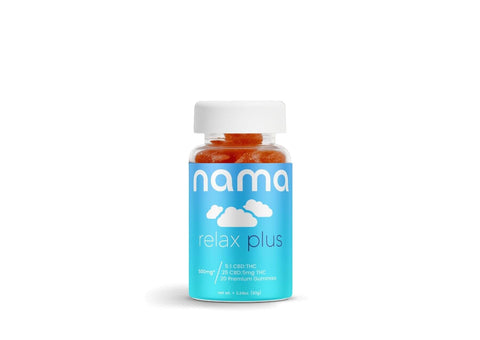
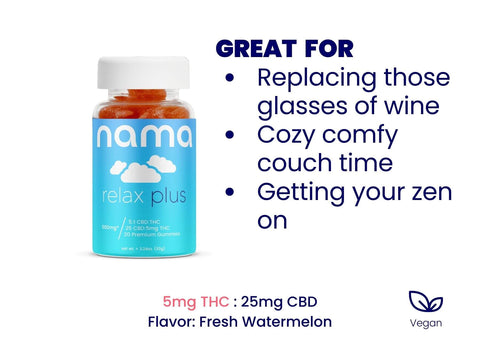
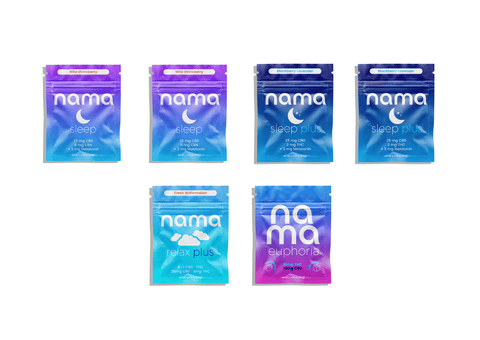

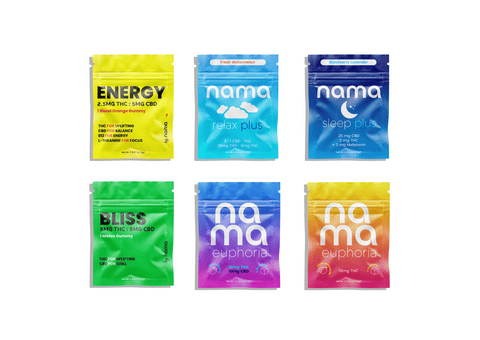

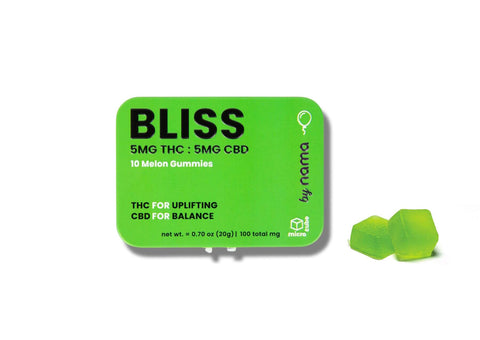
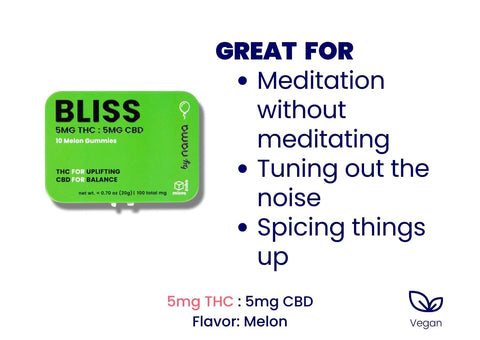
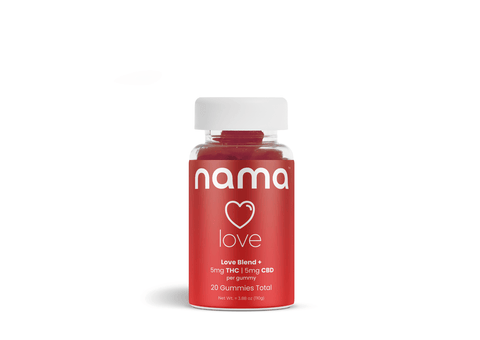
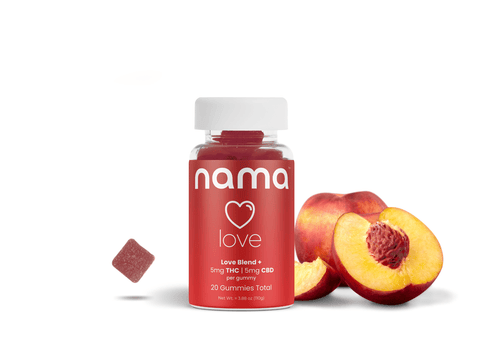
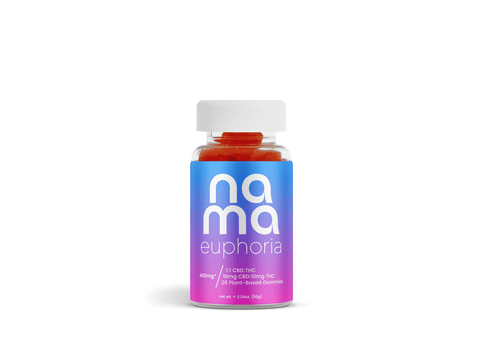
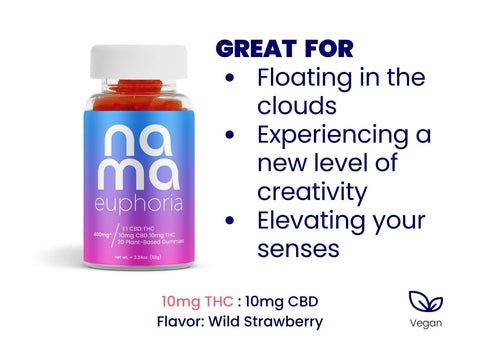
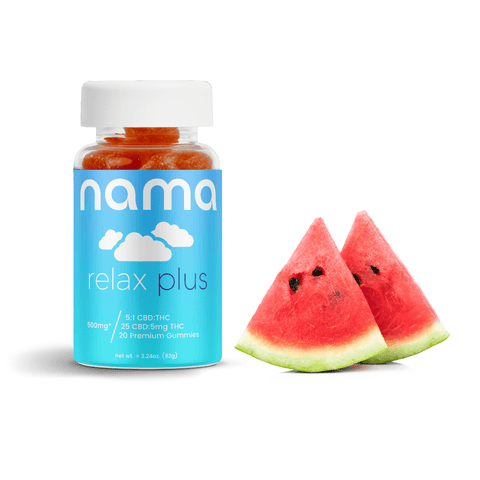

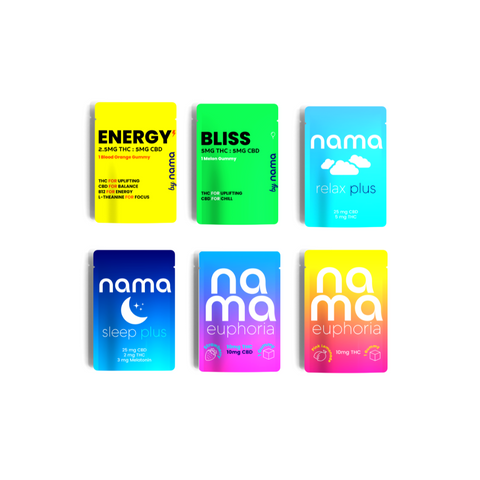
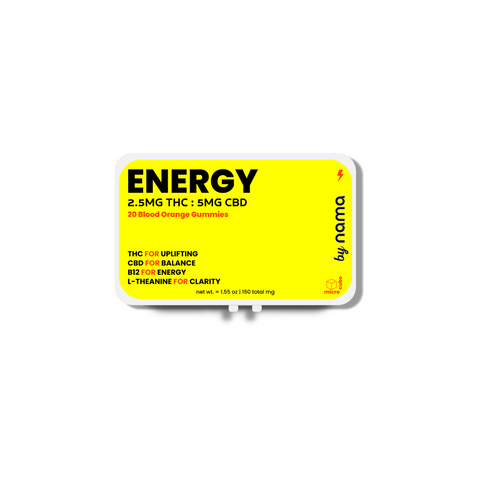

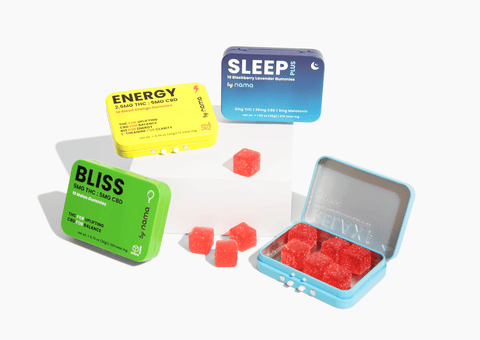
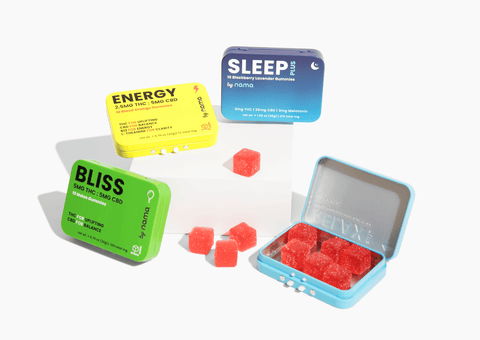
![Buzz Drops™ [THC Drink Drops]](http://www.namacbd.com/cdn/shop/files/nama_thc_buzz_drops.png?v=1711412866&width=480)
![Buzz Drops™ [THC Drink Drops]](http://www.namacbd.com/cdn/shop/files/buzz-drop-wine-comparison.png?v=1736882023&width=480)
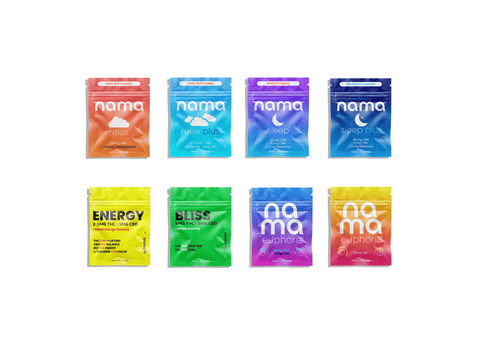

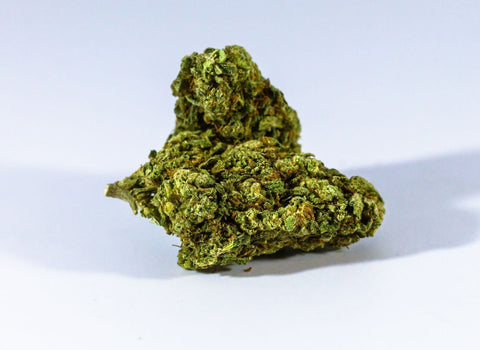


Comments (0)
There are no comments for this article. Be the first one to leave a message!